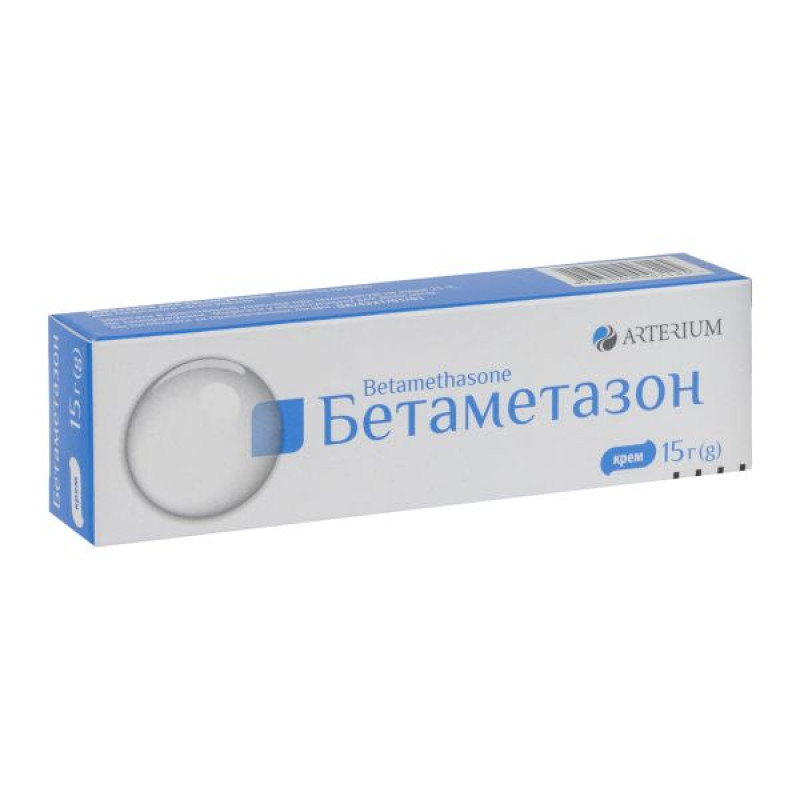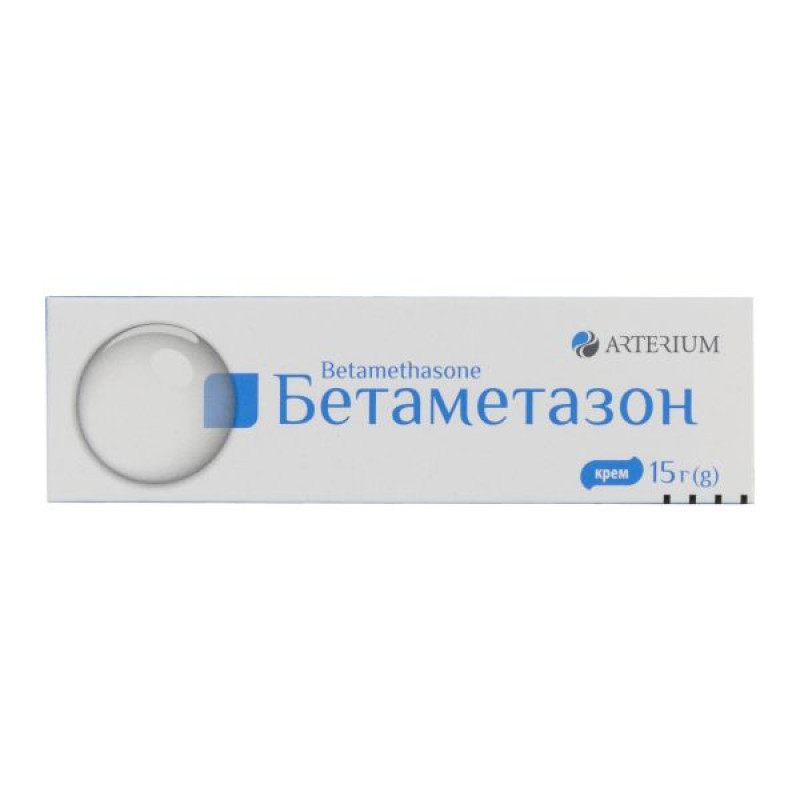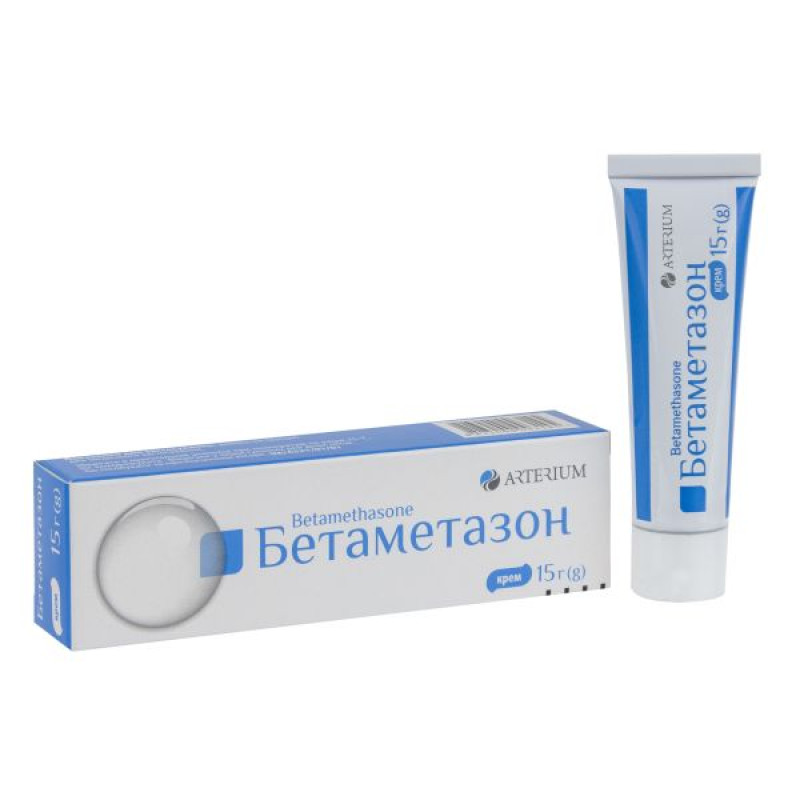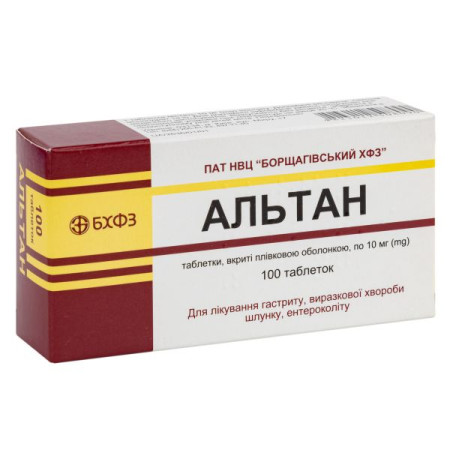Betamethasone cream tube 15 g

Instructions Betamethasone cream tube 15 g
Composition
active ingredient: betamethasone;
1 g of cream contains betamethasone dipropionate* 0.64 mg;
Excipients: methylparaben (methyl parahydroxybenzoate) (E 218) 2 mg; imidourea 5 mg; propylene glycol; glycerin; mineral oil; white soft paraffin; dimethicone; cetostearyl alcohol; polyethylene glycol (macrogol) cetostearyl ether; sodium dihydrogen phosphate, monohydrate; diluted phosphoric acid; purified water.
* - betamethasone dipropionate, calculated as 100% substance.
Dosage form
Cream.
Main physicochemical properties: white cream.
Pharmacotherapeutic group
Corticosteroids used in dermatology.
ATX code D07A C01.
Pharmacological properties
Pharmacodynamics
Betamethasone is a synthetic glucocorticosteroid for external use.
Betamethasone exhibits high glucocorticosteroid activity and only minimal mineralocorticoid effect.
Due to their anti-inflammatory, antipruritic, and vasoconstrictive effects, topical glucocorticosteroids such as betamethasone should preferably be used to treat dermatoses sensitive to corticosteroids.
Pharmacokinetics
When applied topically, betamethasone may be absorbed to a lesser extent by normal, undamaged skin, systemic absorption of corticosteroids is expected only under adverse conditions (skin inflammation, prolonged treatment, occlusive dressing). After penetration into the skin, the pharmacokinetic profile of topical corticosteroids is similar to that of systemic corticosteroids.
Corticosteroids bind to plasma proteins to varying degrees, are mainly metabolized in the liver and excreted in the urine.
Some topical corticosteroids and their metabolites are excreted in the bile.
Indication
For the reduction of inflammatory manifestations of dermatoses sensitive to glucocorticosteroid therapy, such as eczema and dermatitis of all types (including atopic eczema and photodermatitis), lichen planus, prurigo nodosa, discoid lupus erythematosus, necrobiosis lipoidica, pretibial myxedema and erythroderma. It may also be effective in the treatment of psoriasis of the scalp, plaque psoriasis on the skin of the upper and lower extremities, with the exception of widespread plaque psoriasis.
Contraindication
Betamethasone is contraindicated for patients with allergic reactions to any of the components of the drug.
Betamethasone is contraindicated in the following cases:
- viral infections, including post-vaccination reactions and chickenpox;
- viral skin infections (e.g. herpes simplex, shingles, chickenpox);
- pink acne;
- rosacea-like (perioral) dermatitis;
- bacterial dermatoses, including tuberculosis and syphilis of the skin;
- fungal diseases;
- ophthalmological diseases (Betamethasone is not intended for ophthalmic use).
It is not recommended to use Betamethasone cream under occlusive dressings (cast, etc.).
Special care should be taken when applying Betamethasone near the face. Avoid contact with eyes or mucous membranes. Avoid prolonged treatment and/or application to large areas of skin, as absorption of the active substance is possible.
The cream should not be used in the first trimester of pregnancy (see section “Use during pregnancy or breastfeeding”).
Interaction with other medicinal products and other types of interactions
Due to the presence of white soft paraffin and mineral oil, treatment with Betamethasone cream in the anogenital area may damage the structure of latex condoms and reduce their safety when used during treatment.
Application features
Betamethasone is not intended for use in ophthalmology.
Systemic absorption of topical corticosteroids generally increases with increasing corticosteroid dosage, duration of treatment, and body surface area treated. Therefore, corticosteroids with high potency on large areas of skin should be used with careful and periodic monitoring because they may cause suppression of the hypothalamic-pituitary-adrenal (HPA) axis. If suppression develops, the drug should be discontinued, the frequency of application reduced, or the patient transferred to a less potent corticosteroid.
GH function is usually restored upon discontinuation of the drug.
In rare cases, withdrawal symptoms may develop, requiring the addition of a systemic corticosteroid.
Betamethasone cream is generally well tolerated. However, treatment should be discontinued if irritation or hypersensitivity occurs.
If skin irritation or signs of hypersensitivity occur in connection with the use of Betamethasone, treatment should be discontinued and the patient should be given adequate therapy. In the presence of infection, antifungal or antibacterial agents should be prescribed accordingly. If the desired effect does not occur quickly, the use of corticosteroids should be discontinued until the signs of infection have resolved.
Use during pregnancy or breastfeeding
Since the safety of topical corticosteroids in pregnant women has not been established, Betamethasone cream should not be used in the first trimester of pregnancy. These drugs should only be prescribed in later pregnancy if the expected benefit to the expectant mother outweighs the potential risk to the fetus. These drugs should not be used in pregnant women on large areas in large quantities or for long periods, or under occlusive dressings.
It is not yet known whether the drug can penetrate into breast milk after topical application of corticosteroids due to systemic absorption, therefore, when making a decision to discontinue breastfeeding or discontinue the drug, the importance of the treatment being administered to the mother should be taken into account.
The ability to influence the reaction speed when driving or working with other mechanisms
Usually, the drug does not affect the patient's reaction speed when driving or working with other mechanisms.
Method of administration and doses
Betamethasone cream should be applied in a thin layer to the affected areas of the skin 1-2 times a day, depending on the severity of the condition.
Apply a sufficient amount of Betamethasone Cream in a thin layer to completely cover the affected areas of the skin and gently rub into the skin. As the condition improves, the frequency of applications can be reduced.
Prolonged use of Betamethasone cream or application to large areas (more than 20% of the body surface) should be avoided. This includes treatment of more than 10% of the body surface for more than 1 week.
After improvement in the clinical picture, the use of a weaker glucocorticosteroid is often recommended.
Close monitoring for signs and symptoms of systemic drug exposure is recommended.
The method of application should be adapted to the skin type and stage of the disease.
Do not use under occlusive dressings, as the side effects of the drug may be increased.
Children
There are no clinical data on the use of the drug in children, so it is undesirable to use it in patients of this age category.
Because children have a greater surface area to body weight ratio than adults, they absorb the drug more rapidly. Children are at greater risk of hypothalamic-pituitary-adrenal (HPA) axis suppression with corticosteroids and of exogenous corticosteroid effects.
Overdose
Excessive or prolonged use of topical corticosteroids may cause suppression of pituitary-adrenal function, leading to secondary adrenal insufficiency and symptoms of hypercorticism, including Cushing's syndrome. Acute symptoms of hypercorticism are usually reversible.
In case of overdose, appropriate symptomatic treatment is indicated. If necessary, correction of electrolyte balance should be carried out. In case of chronic toxicity, gradual withdrawal of the corticosteroid is recommended.
Side effects
The frequency of side effects is based on the following categories:
very common (≥1/10);
often (≥ 1/100 - < 1/10);
uncommon (≥ 1/1000 - < 1/100);
rare (≥ 1/10,000 - < 1/1,000);
very rare (< 1/10,000);
not known (frequency cannot be estimated from the available data).
| Treatment-related side effects | |
Skin and subcutaneous tissue disorders Often: | Burning, itching, irritation, dry skin, folliculitis, hypertrichosis, acneiform rash, hypopigmentation, acne on the background of steroid use, rosacea-like (perioral) dermatitis, allergic contact dermatitis; |
| Infrequently: | especially under occlusive dressing: skin maceration, skin atrophy, striae, perspiration |
| Infections and infestations | |
| Infrequently: | especially under an occlusive dressing: secondary infection |
Skin tingling, skin induration, skin cracking, feeling of warmth, flaky skin, focal skin peeling, follicular rash, erythema, telangiectasia.
When using the drug on large surfaces or with an occlusive dressing, especially for a long period, it is necessary to bear in mind the possibility of developing systemic effects of the drug.
Hypersensitivity reactions are possible in individuals with individual intolerance to any component of the drug.
Any adverse effects that occur with systemic use of glucocorticoids, including adrenal suppression, may also occur with their topical use.
Expiration date
4 years.
Storage conditions
Store in original packaging at a temperature not exceeding 25 ° C. Do not freeze.
Keep out of reach of children.
Packaging
Cream 0.64 mg/g, 15 g of cream in a tube, 1 tube in a pack.
Vacation category
According to the recipe.
Producer
PJSC "Kyivmedpreparat".
Address
Ukraine, 01032, Kyiv, Saksaganskoho St., 139.
There are no reviews for this product.
There are no reviews for this product, be the first to leave your review.
No questions about this product, be the first and ask your question.











